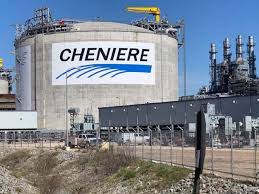
Blackstone Energy Partners, the private equity firm with 202 million shares in Houston’s Cheniere Energy Inc. is suggesting it might be willing to sell its 41% stake in the company.
Cheniere Energy is finishing a $1 billion pipeline in Oklahoma. Blackstone’s 41% share of the company is valued at $9.7 billion.
Blackstone’s leader David Foley told S and P Global Platts and S and P Global Market Intelligence reporters this week at a Houston conference if the offer were right, the company would unload is shares in Cheniere.
Why? Because Cheniere is considered to be “financially healthy” and is also the biggest exporter of U.S. LNG. It has the Sabine Pass terminal in Louisiana as well as a second one in Texas and a proposed expansion. Blackstone no longer considers Cheniere to be a risky investment.
“Everything we own, we have to consider selling at some point,” Foley said. “We’re very happy with the investment. It’s great. If someone else sees that value and wants to make an offer, we’d have to consider it.”
“We hold things for a long time, not forever,” Foley added.
A Cheniere spokesperson declined to comment on Foley’s remarks.
Blackstone was the first major backer of Cheniere’s flagship export terminal at Sabine Pass. In 2012, the firm poured $1.5 billion into Cheniere Energy Partners, a limited partnership formed by Cheniere Energy, to help fund Sabine Pass. At the time, many banks were skeptical about the global market for U.S. LNG.
The investment has grown since then. Cheniere now operates five trains at Sabine Pass and is building a sixth. It operates two trains at its export terminal near Corpus Christi, Texas, and is building a third. A mid-scale liquefaction expansion also has been proposed at the Texas site.
Foley’s description of Blackstone’s current stake in Cheniere Energy Partners is in line with the firm’s position at the end of the second quarter. Blackstone held about 203 million shares, or about 42%, of Cheniere Energy Partners as of June 30, according to S&P Global Market Intelligence data.
“When we made the investment, there was a meaningful amount of risk,” Foley said. “You’re going to build something that hasn’t been built before. How are you going to finance it? Are customers going to pay? Is it going to be on time and on budget? All [the answers] seven years ago were kind of unknown. And our investment was going to be in the form of a security that didn’t pay a cash dividend. It just paid in-kind. You got a piece of paper that said ‘IOU.'”






